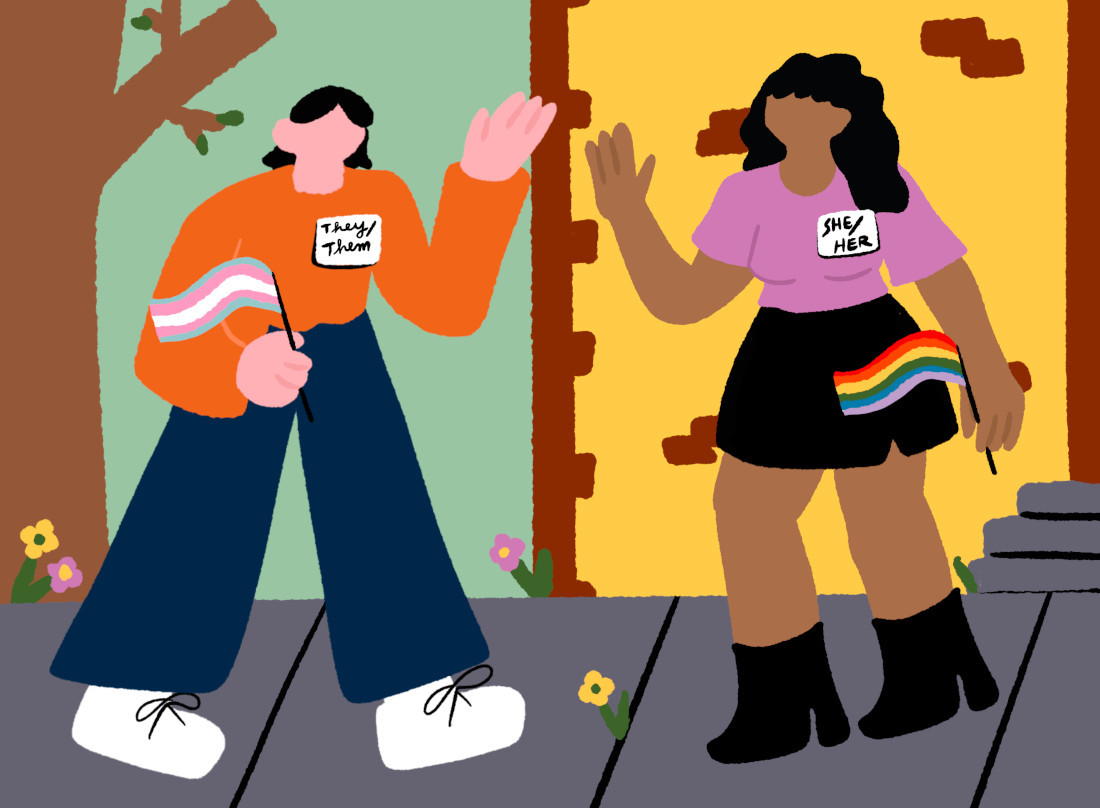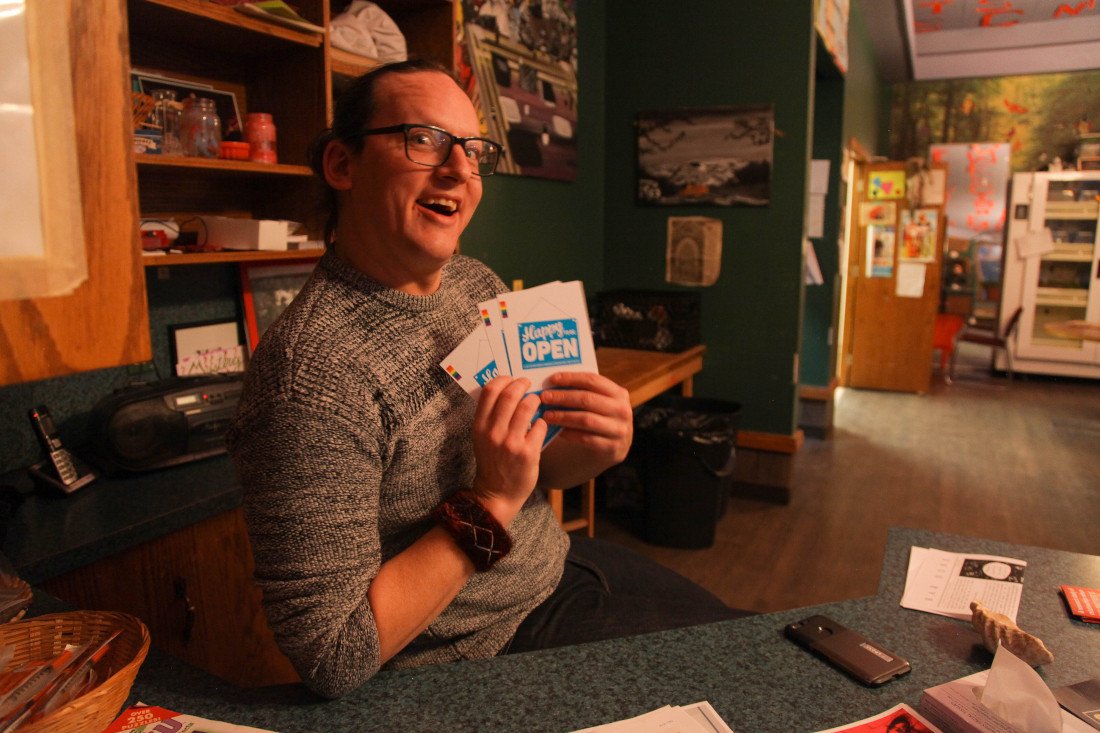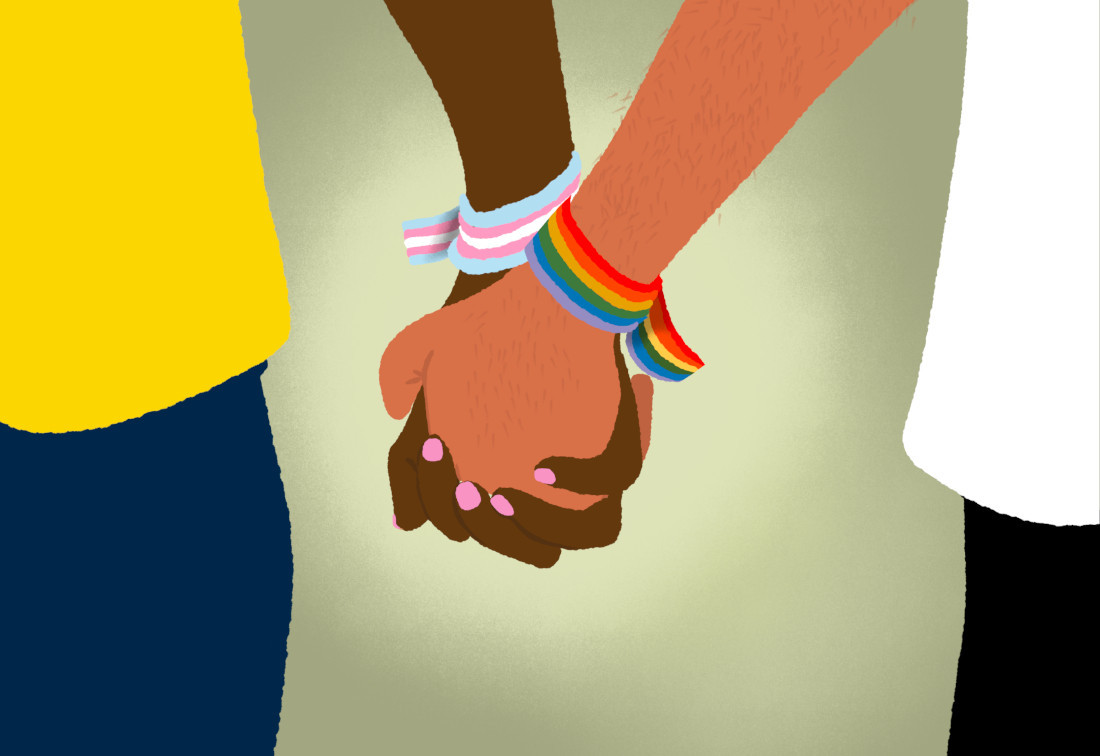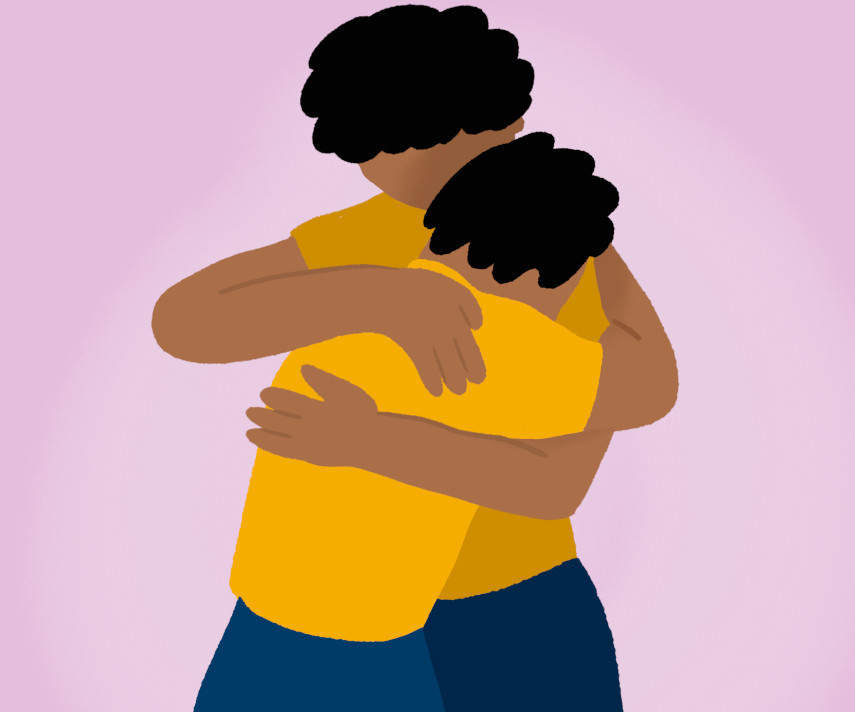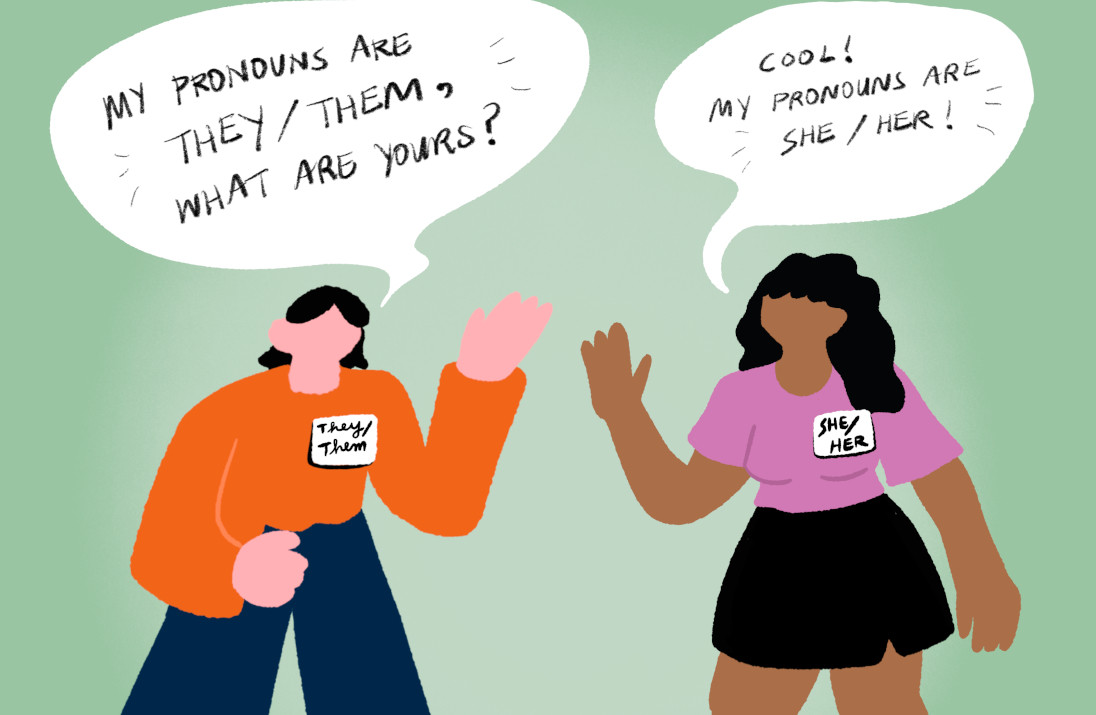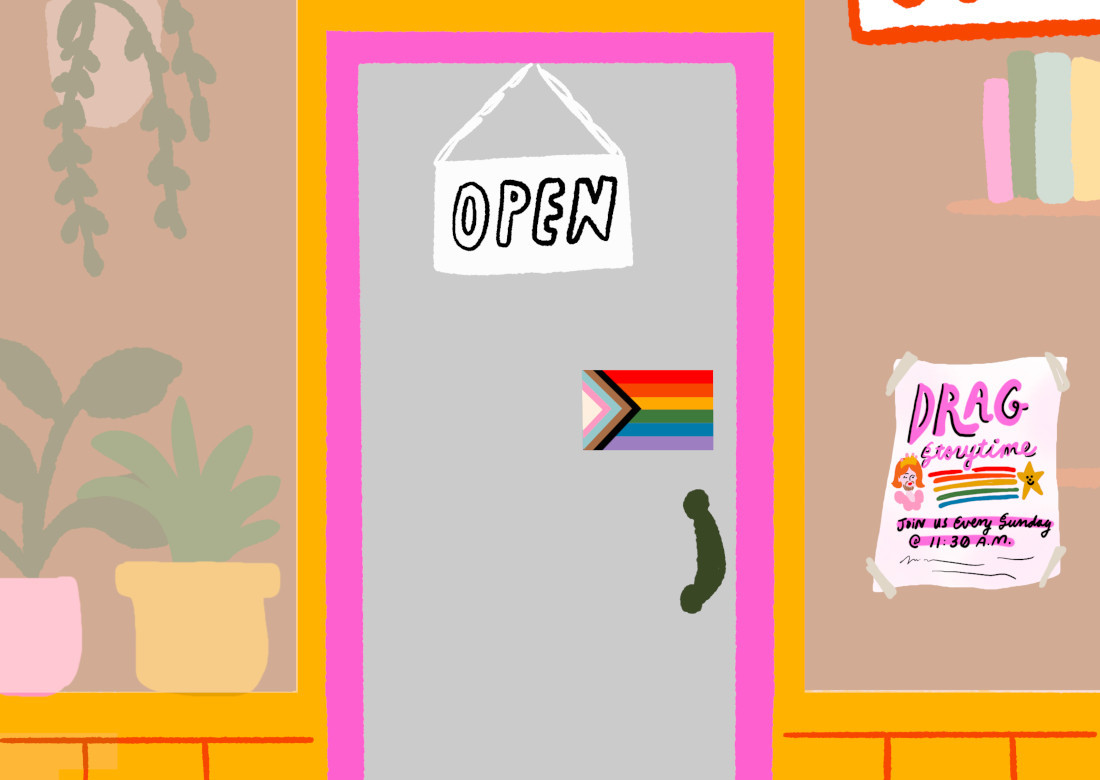Out of the closet and into the streets
‘Building resilience in our community’ through queer spaces
The term “safe space” can be traced back to lesbian and gay bars in the 1960s. It referred to a place where one could connect with the queer community, without fear of judgment or violence. Winnipeg’s queer communities have seen their share of victories and the general 2SLGBTQIA+ community has made toward equality. losses. From the outcry over Scout Coffee’s drag storytime to Youth for Christ Winnipeg’s discriminatory policies, a rise in extremism has both isolated and targeted these communities. With this in mind, it is important to look at, celebrate and reflect on queer spaces and the strides that In the last year, local spaces that prioritize inclusivity and queer safety have been attacked. It can be easy for people to feel alone, unsafe and insecure.
A place to feel safe
Max Snidal is the programming coordinator at ArtsJunktion, a community space that tries to prioritize queer safety. This requires a certain degree of intentionality, Snidal says, mentioning that workshop participants are encouraged to share their pronouns, if comfortable, and wear name tags.
“I think that with the increase of harassment and conservative, heteronormative beliefs ... it’s really important for spaces to be taking it seriously if they want queer and trans people to be attending their events,” they say.
Levi Foy, the executive director of Sunshine House, agrees and says some of the people who frequent the community harm-reduction centre “are seeing a bit of a regression to days past when it was openly acceptable to say ... queerphobic slurs to people.”
Foy is also one of the city’s most well-known drag queens and performs under the name Prairie Sky. While standing outside the Fort Garry Hotel in drag this past November, someone “drove by, rolled down his window and called me a bunch of slurs.”
“That’s not unheard of, but it happened with more frequency when I first started drag eight years ago, and I hadn’t experienced that in a while,” Foy says.
He mentions Sunshine House’s Like That program, which specifically fosters a safer space and environment for people exploring their gender identities. This drop-in program, as well as Sunshine House’s other initiatives, are informal and can help members of queer communities exist without the oppressive identifiers required by cisgender heterosexual (cishet) society.
“Our drop-in programs are modeled off of an auntie’s house, so they’re very familiar,” Foy says. There aren’t many rules or clear people who are “in charge” of the participant groups.
Sunshine House also runs the Gizhiwenimin initiative that supports queer people experiencing houselessness or who need to find safer, more stable living arrangements. The centre also helps people legally change their names and gender-identity markers.
Foy previously worked as a Like That program facilitator and says that it was founded as a reprieve, “a space outside of bars and clinics and in our neighbourhoods for people to come together and be queer together.”
“Through that and through those spaces, you learn history. You learn culture. You learn. You get to just be free to be yourself,” he says. “We often don’t have that ability ... even in spaces that are somewhat deemed safe.”
Platforms for extremism
The increase in public anti-queer sentiment is a global problem with local reverberations.
Dr. Heather Milne, an English professor at the University of Winnipeg who specializes in queer theory, says the recent rise in 2SLGBTQ+ discrimination does not necessarily signal a shift to the political far-right.
They say that online spaces, including social-media platforms and chat groups, “have become a breeding ground for conspiracy theories and for like-minded people to find each other and to mobilize.”
Milne says that while the internet can give extreme opinions a platform, these hard stances do not reflect most people’s views. She references the “the Elon Musk movement of Twitter” and its claims to embrace free speech.
“It’s not really free speech that he’s embracing,” Milne says. “It’s about providing a platform for a particular kind of extreme views.”
They name a recent attempt in North Dakota to pass a bill to fine people who chose to use different gender pronouns than the ones they were assigned at birth. The states’ senators voted overwhelmingly to reject the bill, the stated purpose of which was, according to Republican sponsor David Clemens, to discourage “education that would promote, allow or support the ideology of transgenderism.”
“We have to really think about ways as a society to combat that rise of misinformation before it spreads further, because the implications for those ideologies taking hold are dire,” Milne says.
Queer people face the threat of violence and discrimination every day. In this light, queer safer spaces take on an even greater importance as they become refuges from the larger world.
“Queer people, particularly trans people and gender-nonconforming people, are at risk of street harassment and other forms of violence and discrimination. Having a place where you know you can feel safe and be yourself is vitally important. I think this is true across the age spectrum but maybe especially true for queer youth,” Milne says.
‘Be the queer person that your teenage self needed to see’
Bryce Byron is the information and intake coordinator at Rainbow Resource Centre. While talking about the rise in anti-LGBTQ+ violence, ze names the November 2022 shootings at Club Q in Colorado Springs. Five people were killed and at least 17 injured toward the end of the club’s weekly drag show.
When it comes to discrimination within Winnipeg, Byron adds that the centre received a pamphlet “about detransition fears from a couple of organizations trying to promote the LGB Alliance here in Canada,” an offset of a larger British group that opposes trans rights.
“We’re starting to see a climate where people are starting to think twice about what additional precautions they might need to take if they’re doing a drag-queen story hour,” Byron says.
Ze acknowledges a growing level of concern in Winnipeg’s queer community but mentions that events such as the protest against Scout’s drag-queen storytime are often sensationalized.
“There were 20 or so people who showed up to protest, and they were vastly outnumbered by members of the community, but then the story was protesters were there.” Instead, Byron hopes people focus on coming together and fostering community.
Ze mentions a vigil Club 200 held following the Club Q shootings. “Should anything terrible happen ... the stronger our community’s social connections are prior to that happening, the more that we’re gonna be able to take action, to counter any unfortunate things that might happen in the future.” “A key driver that I often go back to as kind of a touchstone is ‘be the queer person that your 10 year old, 12 year old teenage self needed to see.’”
“So creating places for queer joy, for trans joy, for everyone within our community to connect with, to find connections, to make friends, to build networks like that is good in and of itself, but it has the byproduct of building resilience in our community and an ability to respond in the case that we are attacked.”
Those attacks come in many forms. In response to recent news coverage surrounding Youth for Christ’s anti-2SLGBTQ+ policies at The Edge skatepark, Byron says “spaces that are based in religion are not safe spaces for us because of the amount of homophobia, biphobia and transphobia that is wrapped up in religious language.”
“That creates a sense of trauma within our community that makes it very hard to access organizations that are explicitly faith-based. Youth for Christ explicitly talks about what they’re doing as missionary work.”
Ze notes that while the definition of “community” in Winnipeg has historically been tied to faith-based organizations, there is a “dire need for spaces that are specifically by and for queer folks, and it is absolutely critical that we create those spaces.”
Rainbow Resource Centre is currently constructing a 55+ housing complex that will also serve as the organization’s headquarters. Byron hopes this move will help the group “create those safer spaces where there can be spaces of queer cultural generation and queer cultural production, where we can really have people building community (and) telling their own stories.”
Ze stresses the importance of conversations that can take place in “the absence of people from outside the community.”
“It’s a space where people can escape from that dominant culture of cis-heteropatriarchy and really focus on ‘What do I actually need? What do I think my friends need? How can I support other people who are experiencing the same things I have gone through?’”
“A key driver that I often go back to as kind of a touchstone is ‘be the queer person that your 10-yearold, 12-year-old teenage self needed to see.”
Ze notes that queer people, identities and communities have become increasingly visible. This has produced younger generations who have had a wealth of role models and who don’t have to wonder what their adult lives may look like.
Instead, “they have these ideas of ‘Oh, I can grow up and I can thrive. I can be the gay uncle. I can be the non-binary artist.’”
The centre is celebrating its 50th year. Founded in 1973, it has undergone many evolutions since that time, and Byron encourages anyone interested in this history to check out the Manitoba Gay and Lesbian Archives collection.
“That sort of retrospection on where we have come from and all of the amazing work that our predecessors did to fight and achieve the level of kind of legal equality that we have and legal representation that we have is a great inspiration for what we can do now in order to move us into a future that’s gonna have more space for ... members of the 2SLGBTQ+ community.”
Published in Volume 77, Number 16 of The Uniter (January 26, 2023)

